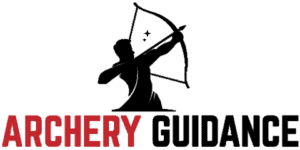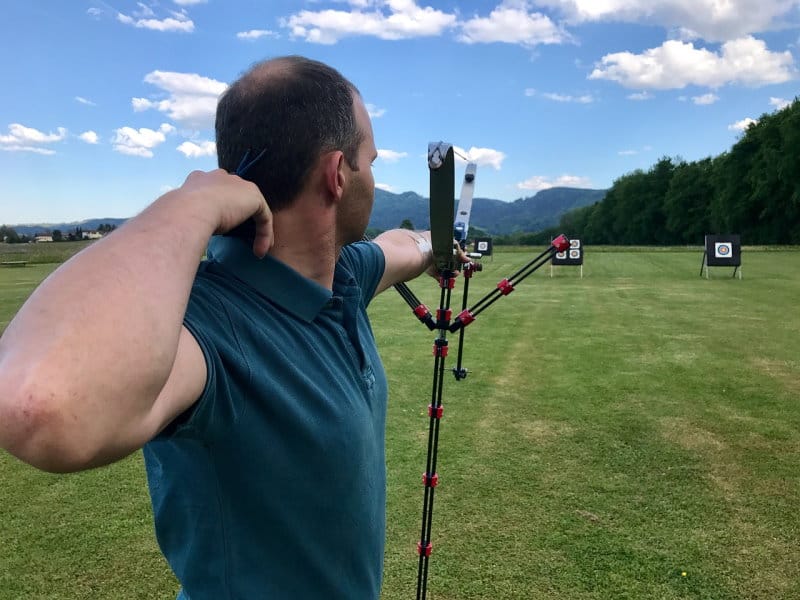From 1-month newbies to professionals with more than 30 years of archery experience, dry firing a bow can happen to anyone. This is despite everyone telling you to never do it and reminding you to avoid it all the time. Truth is, dry fires can be very dangerous to you, those around you, and -mainly- your bow; damage to the latter can be irreparable.
If you’re wondering will dry firing a bow ruin it, such an outcome is most likely because the resulting powerful vibrations can damage or destroy any part of the bow including the string, limbs, cams, cam tracks, and cable guard. Pieces of the bow can also fly off as they break, which can hurt the archer and people nearby.
Dry firing a bow can happen due to multiple reasons, the most common ones being incorrect arrow nocking or string slipping from the archer’s fingers. Luckily, there are ways you can avoid this accident, which I’ll walk you through today.
But first, I’ll explain everything you should know about dry firing a bow, the damage you can expect, and what to do if it happens to you.
How does Dry Firing a Bow Damage it?
When you fire a bow without an arrow, there’s nowhere for the energy stored within the limb and string to release. This causes the bow to behave unexpectedly to release this energy in the form of strong vibrations and heat.
These intense vibrations transfer through the bow’s parts that aren’t built to handle such amounts of energy, causing damage that can render the bow unusable. The extent of the damage varies depending on the material of the bow, its construction quality, and its draw weight.
As you can expect, a lower-quality bow can get ruined completely whereas a higher-quality bow may suffer only a bit of damage or, sometimes, be totally spared.
As for the draw weight of the bow, the heavier it is, the more the released energy. Consequently, compound bows are at a much higher risk of damage from dry firing as they usually possess heavier draw weights than traditional or recurve bows. This is why compound bows store more energy that translates into stronger vibrations.
Additionally, compound bows feature many moving parts, meaning there’s a bigger chance for something to go wrong with a piece.
Which Bow Parts are Likely to Get Damaged from Dry Fire?
Any part of the bow can get damaged by dry firing, but the following parts are the most prone :
- Limbs — the material can get fractured or they can detach from the riser.
- Cams — these can get bent or broken, and the wires can escape the tracks and get warped.
- Bowstring — this can get broken entirely or -if you’re lucky- just strained.
Can a Bow Survive a Dry Fire?
Some bows are built to endure dry firing without sustaining damage, while others can get completely ruined if dry fired only once. It comes down to the type of the bow, its quality, and its draw weight.
This is why you should always play it safe and never ever dry fire your bow. Of course, it’s easier said than done since dry firing can happen so fast before you even have the chance to realize it!
Will a Bow Get Ruined from Dry Firing Once?
A bow won’t necessarily get ruined from dry firing once, but it could happen. Once again, this depends on the bow type, quality, and draw weight
In any case, if you dry fire your bow, don’t use it before having a professional inspect it because some damage -such as bent axles- can’t be spotted easily.
What to do After Dry Firing a Bow
Accidents happen, so don’t feel bad about it. The most important thing is that you and those around you are unharmed. After you make sure everyone is safe, here’s what needs to be done:
Inspect Your Bow

- Take the bow to a spot where you can take a clear look at it without interruption. This means good lighting and -ideally- a table. It can also be quite useful if you have a magnifying glass.
- First, examine the string for any sign of damage or tear. If you do see one, take the bow to a professional at an archery shop as soon as you can. This is because if the bowstring gets damaged or snaps, chances are the bow will be even more damaged.
- If you can, carefully take the string off the bow to release the pressure on the limb and avoid causing further damage. If you’ve never done this before, I recommend skipping this inspection altogether and getting the bow to a professional right away.
- Now, start examining the bow’s limbs. Look for any sign of breakage or fractures; that magnifying glass can come in really handy here to catch any slight damage.
- Move on to examine the cams and riser to see if anything is bent or broken.
- After that, check all other parts of the bow to make sure nothing is fractured or misplaced.
- If things seem okay, you can calm down. I still suggest getting your bow inspected by a professional at an archery shop as soon as possible. You should never use a dry-fired bow before having a professional inspect it first.
Have Your Bow Professionally Inspected
- No matter how embarrassing you feel about admitting the dry firing, always be honest with the professional at the archery shop about the details of the accident.
It’s important to let them know what happened so they know what to look for. Not to mention, you’re hardly the first person to go into a shop with a dry-fired bow.
- During the professional inspection, they’ll deconstruct your bow apart to examine each part and accurately assess the damage. They’ll tell you exactly what got damaged, the extent of the damage, and if there’s a part that requires replacing.
How to Avoid Dry Firing Your Bow
Dry firing accidents can happen to anyone, beginners and professionals alike. Some say it’s inevitable.
Luckily, there are a few things you can do to keep dry firing to a minimum. Below are the most important ones:
- If you’re a newbie, you should practice the proper technique of nocking and releasing an arrow.
- Never let inexperienced people handle your bow. To some people, their first instinct is to pull that string to try and fire the bow without an arrow. Even if they’re not strangers to archery, remind them to not dry fire.
- Regularly check your arrows for loose or damaged nocks. This can result from hitting hard objects.
- Make sure you’re using arrows that are heavy enough for your bow.
- Never draw your bowstring without nocking an arrow. This way, if you accidentally let go of the string, you’ll just be firing a normal shot.
Wrap Up
So, will dry firing a bow ruin it? It’s very likely, but it also depends on the type of the arrow, its construction quality, and its draw weight.
If you suspect your string is damaged, read our article on signs of a bad string to make sure.

